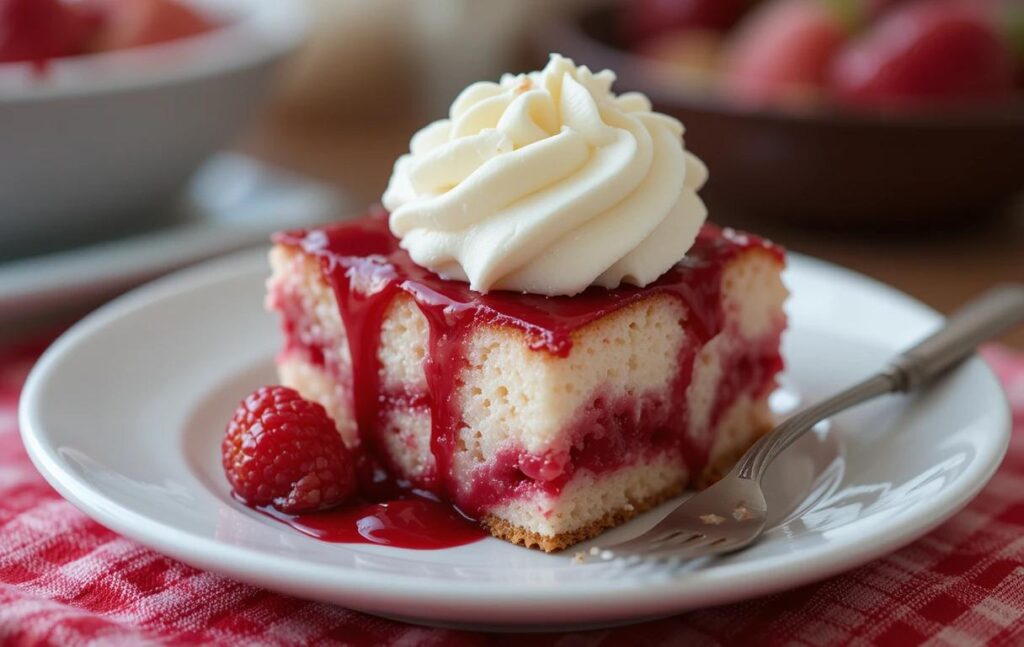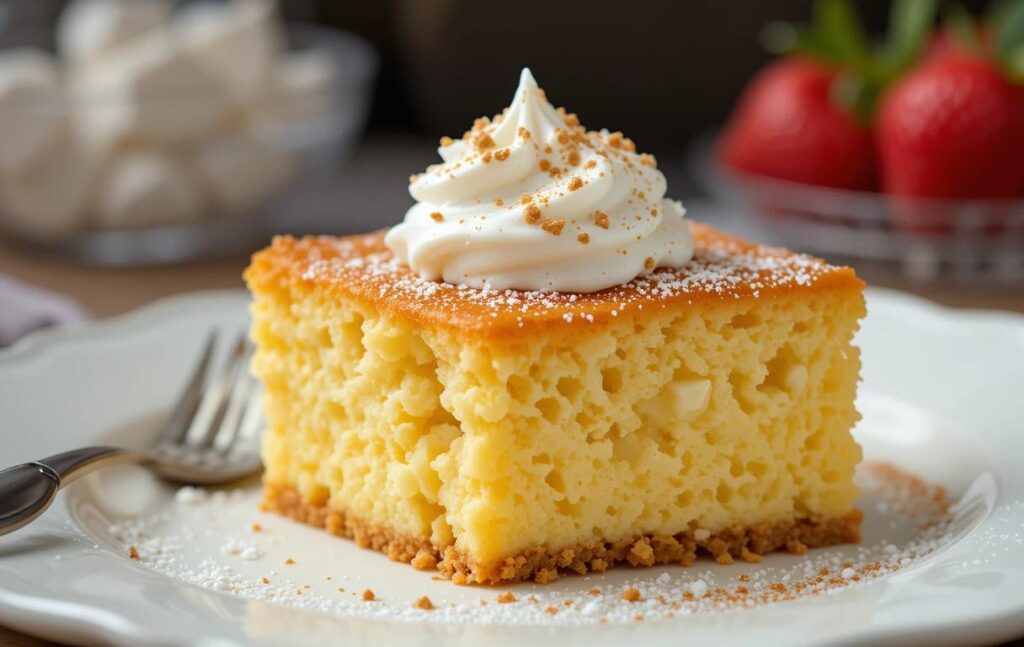Introduction to Cottage Cheese Desserts
Cottage cheese desserts have carved a niche in the culinary world as a delicious and health-conscious indulgence. Combining the creamy texture of cottage cheese with a variety of sweet ingredients, these desserts cater to a growing demand for wholesome yet delightful treats. From smoothies and parfaits to cheesecakes and puddings, the versatility of cottage cheese allows it to adapt to a multitude of dessert recipes.
Why Cottage Cheese Desserts Are a Healthy Choice
Cottage cheese is a nutritional powerhouse, making it a standout ingredient for healthier desserts. Packed with protein, low in fat (particularly the low-fat or non-fat varieties), and rich in essential nutrients like calcium and B vitamins, it supports muscle health, bone strength, and overall well-being. Additionally, its naturally mild flavor pairs beautifully with fruits, honey, nuts, and other nutritious toppings, enhancing both the taste and nutritional profile of desserts.
For individuals managing their calorie intake or looking for alternatives to high-sugar, high-fat desserts, cottage cheese serves as a guilt-free base. Its high protein content also promotes satiety, making these desserts not only indulgent but also satisfying and balanced.
The Growing Popularity of Cottage Cheese Desserts
The popularity of cottage cheese desserts is on the rise, driven by health trends and a shift towards mindful eating. Social media platforms have played a pivotal role in showcasing creative ways to incorporate cottage cheese into desserts, inspiring home cooks and chefs alike. The increasing availability of high-quality cottage cheese varieties in supermarkets further fuels this trend.
Moreover, the global movement towards sustainable eating and reducing food waste aligns with the use of cottage cheese, as it can often be combined with seasonal fruits or pantry staples. From breakfast parfaits to post-dinner treats, cottage cheese desserts offer an accessible, nutritious, and indulgent way to enjoy something sweet without compromising health goals.
Cottage cheese desserts are more than just a food trend; they are a celebration of taste and health harmoniously blended. Whether enjoyed for their nutritional benefits or their creamy, rich flavors, these desserts continue to win hearts worldwide.
What is Cottage Cheese?
Cottage cheese is a fresh, soft, and mildly flavored cheese made from curdled milk. Cottage cheese is characterized by its creamy texture and small curds, often sold with a light coating of whey or cream to enhance its taste and moisture. Unlike aged cheeses, cottage cheese is a fresh cheese, meaning Cottage cheese is not fermented or aged, which gives it a mild and slightly tangy flavor. It is typically available in various fat levels—full-fat, low-fat, and non-fat—making it a versatile option for diverse dietary preferences.
History of Cottage Cheese
Cottage cheese has a rich history that dates back thousands of years, originating as a simple way to preserve milk. Cottage cheese is name is believed to have been derived from the small-scale production of cheese in cottages, where farmers used leftover milk from butter production to make this cheese.
The earliest forms of cottage cheese were made by allowing milk to naturally sour and curdle before separating the curds from the whey. Over time, this process evolved, incorporating modern techniques to create a more consistent and refined product. Cottage cheese gained widespread popularity in the United States in the 20th century as a healthy, protein-rich food and became a staple in diets emphasizing low-fat and high-protein eating.
How Cottage Cheese Differs from Other Types of Cheese

- Fresh vs. Aged
Cottage cheese is a fresh cheese, meaning it is not aged or fermented, unlike cheddar, gouda, or parmesan. This gives it a soft texture and a shorter shelf life. - Texture and Moisture
Cottage cheese has a unique texture due to its small, soft curds, often suspended in a creamy liquid. Most aged cheeses are firm or semi-firm, with minimal moisture content. - Production Process
The production of cottage cheese involves curdling milk with an acid (like vinegar or lemon juice) or a rennet enzyme, followed by draining most of the whey without pressing the curds. In contrast, many other cheeses are pressed, salted, and aged to achieve their distinctive flavors and textures. - Nutritional Profile
Cottage cheese is generally lower in fat and calories compared to aged cheeses. It is also higher in protein per serving, making it a preferred choice for fitness enthusiasts and those seeking healthier cheese options. - Flavor Profile
Due to the lack of aging, cottage cheese has a mild and slightly tangy flavor, while aged cheeses develop complex and robust flavors over time.
Cottage cheese stands out in the cheese family for its simplicity, freshness, and versatility. Its mild taste, nutritional benefits, and ease of incorporation into various dishes have cemented its place as a staple ingredient in kitchens worldwide.
Nutritional Benefits of Cottage Cheese
Cottage cheese is renowned for its impressive nutritional profile, making it a versatile and health-conscious ingredient in both savory and sweet dishes. Its nutrient density, coupled with its mild flavor, makes it particularly appealing for desserts, where taste and health often need to coexist harmoniously.
1. High in Protein
Cottage cheese is an excellent source of high-quality protein, which is essential for muscle growth, repair, and overall body function. A single serving (about ½ cup) can contain 12–14 grams of protein, making it a favorite among athletes, fitness enthusiasts, and those following high-protein diets. The protein content also helps keep you feeling full for longer, reducing the urge for less healthy snacking.
2. Low in Fat
Depending on the variety, cottage cheese can be low in fat or even fat-free, making it a healthier option compared to many traditional dessert bases like cream cheese or heavy cream. For those seeking to reduce calorie intake while still enjoying creamy, indulgent textures in their desserts, cottage cheese offers a guilt-free alternative.
3. Rich in Calcium
Cottage cheese is a significant source of calcium, a vital mineral for maintaining strong bones and teeth. Calcium also supports nerve function, muscle contraction, and heart health. Including cottage cheese in desserts is an easy way to boost your daily calcium intake, especially for those who may not consume other dairy products regularly.
4. Low in Carbohydrates
Cottage cheese is naturally low in carbohydrates, particularly the sugar lactose, making it a suitable option for individuals managing their carbohydrate intake, such as those on ketogenic or low-carb diets. This quality enhances its appeal in desserts, where additional sweeteners can be controlled to fit dietary preferences.
Why Cottage Cheese is Great for Desserts
- Versatility in Texture: Its creamy and smooth texture blends seamlessly into dessert recipes like cheesecakes, puddings, and mousse. When pureed, it becomes silky, closely mimicking the texture of richer dairy products.
- Mild Flavor Profile: The subtle tanginess of cottage cheese complements a wide range of flavors, from the sweetness of honey and fruits to the richness of chocolate and spices like cinnamon.
- Nutritious Substitution: Cottage cheese can replace heavier, high-fat ingredients in desserts, such as mascarpone, cream cheese, or butter, while maintaining a creamy consistency and adding nutritional value.
- Boosts Protein in Sweets: By incorporating cottage cheese into desserts, you enhance their protein content, making them more filling and satisfying compared to traditional sugary treats.
Cottage cheese desserts are not only indulgent but also align with health-conscious eating. From a nutritional standpoint, they deliver a trifecta of protein, low fat, and calcium, making them an excellent choice for guilt-free enjoyment. Whether used in cheesecakes, parfaits, or smoothies, cottage cheese adds a nutritious twist to dessert creations.
Types of Cottage Cheese

Cottage cheese comes in various forms, each offering unique textures, flavors, and nutritional profiles that cater to different culinary needs. For desserts, choosing the right type of cottage cheese can elevate the final dish, ensuring it complements the recipe’s requirements. Here are the main types of cottage cheese and how they are used in desserts:
1. Regular Cottage Cheese
- Description:
Regular cottage cheese is the classic version, featuring curds of varying sizes (small, medium, or large) suspended in a creamy liquid. It has a mild flavor and a slightly tangy taste. - Uses in Desserts:
This type works well in recipes where texture adds character, such as fruit salads, layered parfaits, or as a topping for pancakes and waffles. The curds provide a unique mouthfeel, adding interest to simple desserts.
2. Whipped Cottage Cheese
- Description:
Whipped cottage cheese is regular cottage cheese that has been blended until smooth and creamy. It eliminates the curd texture, resulting in a consistency similar to cream cheese or ricotta. - Uses in Desserts:
Whipped cottage cheese is ideal for creamy desserts like cheesecakes, mousses, and puddings. It can also be used as a healthier frosting base or as a spread for sweetened toasts and pastries. Its smoothness makes it easy to incorporate into recipes requiring a fine texture.
3. Low-Fat Cottage Cheese
- Description:
Low-fat cottage cheese is made with reduced-fat milk, lowering its fat and calorie content while maintaining its protein levels. It is a popular choice for health-conscious individuals. - Uses in Desserts:
Low-fat cottage cheese is perfect for guilt-free desserts such as smoothies, protein-packed ice creams, or baked goods like muffins and pancakes. It provides creaminess without adding unnecessary calories, making it a versatile and nutritious option.
4. Flavored Cottage Cheese
- Description:
Flavored cottage cheese varieties are pre-mixed with sweet or savory ingredients. For desserts, these may include fruit purees, cinnamon, or vanilla. - Uses in Desserts:
Flavored cottage cheese is a ready-to-use option for quick and simple desserts like fruit bowls, dessert dips, or as a filling for crepes. It reduces preparation time while adding a burst of complementary flavor.
5. Organic Cottage Cheese
- Description:
Organic cottage cheese is produced using organic milk and without artificial additives or preservatives. It is often preferred for its natural taste and purity. - Uses in Desserts:
Organic cottage cheese can be used in any dessert recipe to align with organic or clean-eating dietary preferences. Its wholesome quality enhances desserts focused on natural and fresh ingredients.
Selecting the Right Cottage Cheese for Desserts
- Texture Preference: Choose whipped cottage cheese for creamy desserts and regular for recipes where texture adds value.
- Health Goals: Opt for low-fat varieties to reduce calorie intake while maintaining protein content.
- Flavor Pairing: Use flavored cottage cheese for simple, no-cook desserts or organic for recipes emphasizing natural ingredients.
By understanding the different types of cottage cheese and their unique characteristics, you can tailor your dessert creations to be both delicious and nutritionally satisfying.
Cottage Cheese Cheesecake Recipe
A cottage cheese cheesecake is a creamy, lighter alternative to traditional cheesecake, offering a protein-packed, guilt-free dessert option. Here’s a step-by-step guide to creating the perfect cottage cheese cheesecake.
Ingredients
The Crust:
- 1 ½ cups graham cracker crumbs (or digestive biscuit crumbs)
- 2 tablespoons granulated sugar
- 5 tablespoons unsalted butter, melted
The Filling:
- 2 cups cottage cheese (whipped for a smoother texture)
- 1 cup Greek yogurt or sour cream
- 3 large eggs
- ¾ cup granulated sugar
- 1 tablespoon cornstarch or all-purpose flour
- 1 teaspoon pure vanilla extract
- Zest of 1 lemon (optional, for a citrusy flavor)
- Pinch of salt
The Topping (Optional):
- Fresh berries (strawberries, blueberries, or raspberries)
- Fruit compote or jam
- Whipped cream
Step-by-Step Recipe
1. Prepare the Crust
- Preheat your oven to 325°F (160°C).
- In a bowl, mix graham cracker crumbs, sugar, and melted butter until the mixture resembles wet sand.
- Press the mixture evenly into the bottom of a 9-inch springform pan, creating a firm crust. Use the back of a spoon or a flat-bottomed glass for evenness.
- Bake the crust for 8–10 minutes. Remove from the oven and let it cool while preparing the filling.
2. Make the Filling
- If your cottage cheese has curds, blend it in a food processor or blender until smooth. This ensures a creamy cheesecake texture.
- In a large mixing bowl, combine the whipped cottage cheese, Greek yogurt (or sour cream), and sugar. Beat with a hand mixer until smooth.
- Add the eggs one at a time, mixing well after each addition.
- Mix in cornstarch (or flour), vanilla extract, lemon zest (if using), and salt. Blend until all ingredients are fully incorporated.
3. Assemble and Bake
- Pour the filling over the prepared crust in the springform pan. Smooth the top with a spatula.
- Place the cheesecake in the oven and bake for 45–50 minutes, or until the edges are set but the center jiggles slightly when gently shaken.
- Turn off the oven and leave the cheesecake inside with the door slightly ajar for 1 hour. This gradual cooling helps prevent cracks.
4. Cool and Chill
- Remove the cheesecake from the oven and let it cool completely to room temperature.
- Cover the cheesecake and refrigerate for at least 4–6 hours, preferably overnight, to allow it to set fully.
Tips for a Perfect Cottage Cheese Cheesecake
- Use Whipped Cottage Cheese: For a creamy texture, blend cottage cheese until smooth before adding it to the filling.
- Room Temperature Ingredients: Ensure all ingredients, especially eggs and dairy, are at room temperature for a smooth batter.
- Prevent Cracks: Avoid overmixing the batter and allow the cheesecake to cool gradually.
- Water Bath (Optional): For a super creamy cheesecake, bake the springform pan in a water bath. Wrap the pan in foil to prevent leaks and place it in a larger pan with 1–2 inches of hot water.
- Chill Time: Patience is key—chill the cheesecake for several hours or overnight for the best texture and flavor.
- Decorate Wisely: Add toppings just before serving to keep the cheesecake fresh and visually appealing.
Serve your cottage cheese cheesecake with a drizzle of fruit compote or a dollop of whipped cream for an indulgent yet nutritious dessert!
FAQ: Cottage Cheese Desserts

1. Can I use low-fat cottage cheese in desserts?
Yes, low-fat cottage cheese is an excellent choice for desserts. It reduces the overall fat content while maintaining a creamy texture and high protein level. It works particularly well in recipes like cheesecakes, smoothies, and parfaits where creaminess is essential. For an ultra-smooth texture, blending low-fat cottage cheese before use is recommended.
2. Are cottage cheese desserts suitable for diabetics?
Cottage cheese desserts can be made suitable for diabetics by using low-fat, unsweetened cottage cheese and replacing regular sugar with natural or artificial sweeteners like stevia or erythritol. Pairing cottage cheese with low-glycemic fruits (e.g., berries) or sugar-free syrups can further enhance their suitability for a diabetic-friendly diet.
3. How long can I store cottage cheese desserts?
Most cottage cheese desserts can be stored in the refrigerator for 3–5 days in an airtight container. It’s important to check for signs of spoilage, such as an off smell or watery separation, before consuming. Desserts with fresh fruit toppings may have a shorter shelf life, as the fruit can become soggy or spoil.
4. Can I freeze cottage cheese desserts?
Yes, you can freeze many cottage cheese desserts, such as cheesecakes or cottage cheese ice creams. However, some recipes may experience slight texture changes after freezing due to the high moisture content in cottage cheese. For best results, thaw the desserts in the refrigerator and consume them within 2–3 months of freezing. Avoid freezing desserts with fresh fruit or toppings, as they may not thaw well.
5. What are some vegan alternatives to cottage cheese in desserts?
For those seeking vegan options, several alternatives can mimic the texture and flavor of cottage cheese:
- Silken Tofu: Blends into a smooth, creamy texture similar to whipped cottage cheese and works well in cheesecakes or puddings.
- Cashew Cream: Made by blending soaked cashews, it provides a rich and creamy consistency suitable for dessert recipes.
- Almond Ricotta: A plant-based substitute with a texture that mimics cottage cheese curds, ideal for parfaits and layered desserts.
- Coconut Yogurt: Offers a tangy and creamy option for no-bake desserts or fruit-based recipes.
Conclusion
Cottage cheese desserts are versatile, nutritious, and customizable to suit various dietary needs. From low-fat options to diabetic-friendly recipes, they cater to health-conscious dessert lovers while delivering indulgent flavors and textures. Whether refrigerated, frozen, or adapted with vegan substitutes, cottage cheese desserts offer endless possibilities for guilt-free enjoyment.
9 Cottage Cheese Desserts To Use Up That Tub in the Fridge
More Recipes
Related Recipes
- “Tuna Tomato Sauce Pasta Recipe“: A tomato-based recipe showcasing another way to use tomatoes.
- “Baked Chicken Fettuccine Alfredo with Broccoli“: Another comforting dish that can be complemented with tomato-based sauces.
Ingredient-Focused Content
- “Lions Mane Mushroom Recipe“: Suggest using a tomato gravy as a flavorful addition for plant-based dishes.
Cooking Techniques and Enhancements
- “Mango Habanero Salsa“: Explore complementary uses of sauces and gravies for flavor diversity.
Storage and Reuse Tips
- “Sous Vide Recipes“: Recommend tomato gravy as a sauce for sous vide-cooked meats or vegetables.
- “Ocean Spray Cranberry Sauce Recipe“: Guide readers on making and storing sauces, including tomato gravy.

